
Role of Foot Muscles Studied by University of Queensland
 Recent research from the University of Queensland scientists has shed some light on the role other foot muscles play in arch support. The scientists used an experiment that involved weights to prove this. Upon studying the movement of the muscles in the foot, it became clear that more muscles aid in arch support than originally thought.
Recent research from the University of Queensland scientists has shed some light on the role other foot muscles play in arch support. The scientists used an experiment that involved weights to prove this. Upon studying the movement of the muscles in the foot, it became clear that more muscles aid in arch support than originally thought.
Dr. Glen Lichtwark and his colleagues at the university conducted another experiment using electrical stimulation. When activated, the tissues in the arch began to rise. Lichtwark believes that this could play an innovative role for the feet when it comes to designing footwear, injury rehabilitation and understanding bipedalism.
The biomechanics are the cogs behind the gears that manage your feet. If you would like more information, see podiatrist Dr. Genine Befumo or Dr. Mark Berger of University Foot & Ankle Center, LLC. Dr. Befumo and Dr. Berger can provide in-depth information as well as measure your personal foot biomechanics.
A History of Biomechanics
- Biomechanics dates back to the BC era in Egypt where evidence of professional foot care has been recorded.
- In 1974 biomechanics gained a higher profile from the studies of Merton Root, who claimed that by changing or controlling the forces between the ankle and the foot, corrections or conditions could be implemented to gain strength and coordination to the area.
Modern technology improvements are based on past theories and therapeutic processes providing a better understanding of podiatry concepts for biomechanics. Computers provide accurate determinations about the forces, moments and patterns of the foot and lower legs with the most important information captured.
Advances in materials and more awareness of biomechanics have developed enhanced corrective methods, offering further options for foot-related injuries. Understanding foot biomechanics can help improve and eliminate pain, stopping further stress to the foot.
If you have any questions, please feel free to contact one of our offices located in Monroe Township and East Brunswick, NJ. We offer the newest diagnostic and treatment technologies for all your foot care needs.
Read more about Biomechanics of Podiatry.
Homemade Athlete’s Foot Remedies
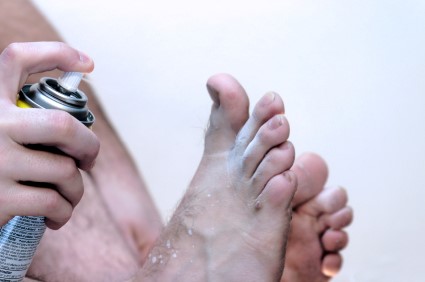 Patients who would rather not have anything to do with prescription drugs can make use of natural remedies to successfully treat Athlete’s foot. For example, be sure to apply apple cider vinegar or tea tree oil directly onto areas of the foot affected by the condition.
Patients who would rather not have anything to do with prescription drugs can make use of natural remedies to successfully treat Athlete’s foot. For example, be sure to apply apple cider vinegar or tea tree oil directly onto areas of the foot affected by the condition.
There are also a number of liquid solutions that can be made to wash the feet in. For one solution, mix one part white vinegar with two parts warm water, soaking the feet can soak for fifteen minutes. You can also grind garlic into a fine paste and mix into a tub of water to create another solution. A third solution is boiling neem leaves in water for ten minutes, allow water to cool, and wash the feet in this twice a day.
Athlete’s foot can be treated with either prescription drugs or natural remedies like those aforementioned. Consult with podiatrist Dr. Genine Befumo of University Foot & Ankle Center. Dr. Befumo will attend to all of your foot and ankle needs.
Athlete’s Foot: The Sole Story
If you suffer from itching, burning, dry, and flaking feet, this may be a sign of athlete's foot. Athlete's foot, also known as tinea pedis, can be extremely contagious, and it often infects shower floors, gyms, socks and shoes, and anywhere else feet may come in contact with. It is commonly found in public changing areas and bathrooms, dormitory style living quarters, around locker rooms and public swimming pools.
Solutions to Combat Athlete’s Foot
- Hydrate your feet by using lotion
- Exfoliate
- Buff off nails
- Use of anti-fungal product
- Examine feet and visit your doctor if any suspicious blisters or cuts are present.
What is Tinea?
- Athlete’s foot is often caused by the same fungus that causes ringworm (tinea).
- Tinea can invade other parts of the body as well, if the proper thriving conditions for it are met.
- Tinea thrives in mostly dark, warm and moist environments.
- Although many people never experience athlete’s foot, around 70% of the population may suffer from tinea at some point.
For more information about Athlete’s Foot, follow the link below.
If you have any questions, please contact one of our offices in East Brunswick and Monroe, NJ. We offer the newest diagnostic and treatment technologies for all your foot care needs.
Read more about Athlete’s Foot
Athlete's Foot: The Sole Story
Do you suffer from itching, burning, dry, and flaking feet? It could be athlete's foot. Athlete's foot, also known as tinea pedis, can be extremely contagious, often infecting shower floors, gyms, socks and shoes, and anywhere else feet might contact. It's commonly found in public changing areas and bathrooms, dormitory style living quarters, around locker rooms and public swimming pools. "Commons" areas in prisons and residential care facilities are frequently caught feeding the fungus as well. One step in the wrong direction can be enough to start the fire that can be tremendously difficult to treat.
Athlete's foot is most often caused by the same fungus that causes ringworm (tinea). It can be spread by direct contact with an infected body part, contaminated clothing, or by coming in contact with other objects or body parts that have been exposed to the fungus. Although the feet are more frequently assumed to get athlete's foot, tinea can invade other parts of the body as well so long as the proper growing conditions are met.
Tinea thrives in a dark, warm, and moist environment. Body parts that are often infected include the hands, groin, and scalp. Although many people never experience athlete's foot, around 70% of the population suffers from tinea at some point in their lifetime. Like most ailments, some people are more likely to acquire this fungal infection than others. People with a history of tinea or other skin infections are more likely to suffer from recurrent, or even additional, unrelated infections. The extent to which a person is tormented by the fungus can vary greatly as well.
While some people are never even aware that they have been infected with athlete's foot, others are pestered with mild to moderate symptoms like dry and flaking skin, itching, and redness. Still others are bothered by more severe symptoms including cracked and bleeding skin, intense itching and burning, and even pain when walking. In the worst cases, tinea can cause blistering as well.
The treatment for athlete's foot begins with prevention. Changes in the environment infected with athlete's foot can prevent spreading. Keeping the area that is infected clean and dry with the use of medicated cleansers and powders is essential. Allowing the area to breathe is important in the treatment as well. Exposure to cool air and light can make conditions undesirable for tinea. Treating the infected area with miconazole, tolnaftate, or other medicated creams, ointments, or sprays not only helps to kill the fungus, but helps prevent recurrences as well. White vinegar-based foot soaks can also be beneficial. Seeing a podiatrist is often a good idea when treating athlete's foot, since more often than not, other skin infections can develop from the initial infection, and recurrences are common.
Ingrown Toenails Can Occur in Children
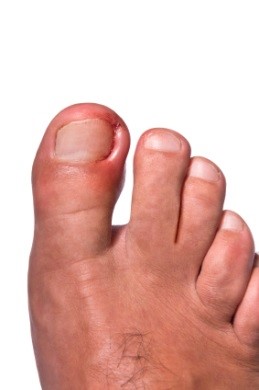 Children are susceptible in developing ingrown toenails in their feet for a myriad of reasons. One of the main ways a child can get an ingrown toenail is by cutting his or her nails too short. To prevent such an occurrence, cut their nails evenly and be sure not to trim them down too much. Ingrown nails may also occur if a child wears socks and shoes that do not adequately cover his or her feet.
Children are susceptible in developing ingrown toenails in their feet for a myriad of reasons. One of the main ways a child can get an ingrown toenail is by cutting his or her nails too short. To prevent such an occurrence, cut their nails evenly and be sure not to trim them down too much. Ingrown nails may also occur if a child wears socks and shoes that do not adequately cover his or her feet.
Other cases of ingrown toenails can simply be caused by a genetic predisposition to curved nails. No matter how the ingrown toenail was caused, do not attempt to treat this condition at home. Removing an ingrown nail with a “bathroom surgery” can lead to a bacterial infection.
Ingrown toenails are terribly uncomfortable, and in the worst cases surgery might be required to get rid of them. If you think you have an ingrown toenail, consult podiatrist Dr. Genine Befumo of University Foot & Ankle Center. Dr. Befumo will confirm your diagnosis and do everything she can to treat your problem.
Ingrown Toenails Causes
Ingrown toenails occur when a toenail grows sideways into the bed of the nail, causing pain, swelling, and possibly infection.
There are a number of risk factors for ingrown toenails. Some include cutting your nails too short, participating in strenuous sports, diabetes, obesity, and fungal infection. Some are genetically predisposed to ingrown nails, although wearing ill-fitting or damp shoes can exacerbate the problem.
Treatment
There are a number of steps you can take to treat ingrown nails:
-Let your toenails grow out
-Soak the toes in hot water with antibiotic soap or Epsom salts
-Placing a piece of cotton under the affected nail may allow the toe to grow up instead of into the nail bed
-Rest with your feet up
If however, your pain is severe, or you see red streaks running up your leg, you should see a podiatrist. Your podiatrist may make a small incision and remove part of the toe nail to relieve the pressure. A local anesthetic may be used to lessen the discomfort of the operation. Topical medication may also be prescribed to prevent the regrowth of the problem nail.
If you have any questions, please contact one of our offices in East Brunswick and Monroe, NJ. We offer the newest diagnostic and treatment technologies for all your foot care needs.
Read more about Ingrown Toenails
Ingrown Toenail Care
An ingrown toenail is caused when a toenail grows sideways into the bed of the nail, causing pain and swelling. Sometimes this can become infected causing drainage and may become serious.
There are many risk factors that can predispose a person to this common condition. Cutting your nails too short, participating in sports, diabetes, being overweight, or having a fungal infection of the toe can all cause ingrown toe nails. Many people are genetically prone to ingrown nails and it can often be related to genetics. Often the problem can come from wearing ill-fitting shoes, or even from shoes that keep the feet slightly damp.
There are some things that you can do to prevent and treat these painful problems. Letting your toe nails grow a little longer will help prevent this condition. If you do develop an ingrown nail, soaking the toe in hot water will help prevent infection and lessen pain. You may want to add antibiotic soap or Epsom salts to the water. This will help to prevent infection.
Some experts also recommend placing small pieces of cotton under the affected part. This will help the toenail to grow up instead into in your nail bed. Resting with your feet up can reduce swelling and redness.
If your pain is so severe that it keeps you from everyday activities, it is time to see your podiatrist. Also, if you see a red streak running up your leg, or if your infection is spreading, see a podiatrist immediately. There are many quick treatments that can lessen your pain and have you walking with comfort.
One method of treating an ingrown toenail involves using a Band-Aid. Wrapping the affected toe with a Band-Aid will prevent infection and also keep the nail from growing out at painful angles.
If your podiatrist feels it is necessary, he or she may make a small incision and remove part of your toe nail. Medication will be placed in the nail bed to prevent re-growth of the problem nail parts. This will be done under local anesthesia and should lessen your discomfort in no time. You will be advised to stay off your foot for a day or so, but can then carry on normal activities.
Take care of your feet; you have many steps to take in your life. Walking in comfort should be a priority for a lifetime of healthy living.
Scientists Research Role of Foot Muscles
 University of Queensland scientists focused their research efforts and discovered the role foot muscles play in arch support. To prove that it isn’t just the plantar fascia, an experiment involving weights was conducted. The scientists monitored the responses of the muscles in their feet as the subjects moved.
University of Queensland scientists focused their research efforts and discovered the role foot muscles play in arch support. To prove that it isn’t just the plantar fascia, an experiment involving weights was conducted. The scientists monitored the responses of the muscles in their feet as the subjects moved.
Another experiment involving electrical stimulation was performed soon after, which showed that when activated, these tissues cause the arch to rise. Dr. Glen Lichtwark believes this could play an important role in fields focusing on the feet. This includes footwear design, injury rehabilitation, and even the biological understanding of bipedalism.
The biomechanics are the cogs behind the gears that manage your feet. If you would like more information, see podiatrist Dr. Genine Befumo of University Foot & Ankle Center. Dr. Befumo can provide in-depth information as well as measure your personal foot biomechanics.
A History of Biomechanics
- Biomechanics dates back to the BC era in Egypt where evidence of professional foot care has been recorded.
- In 1974 biomechanics gained a higher profile from the studies of Merton Root, who claimed that by changing or controlling the forces between the ankle and the foot, corrections or conditions could be implemented to gain strength and coordination to the area.
Modern technology improvements are based on past theories and therapeutic processes providing a better understanding of podiatry concepts for biomechanics. Computers provide accurate determinations about the forces, moments and patterns of the foot and lower legs with the most important information captured.
Advances in materials and more awareness of biomechanics have developed enhanced corrective methods, offering further options for foot-related injuries. Understanding foot biomechanics can help improve and eliminate pain, stopping further stress to the foot.
If you have any questions, please contact one of our offices in East Brunswick and Monroe, NJ. We offer the newest diagnostic and treatment technologies for all your foot care needs.
Read more about Biomechanics of Podiatry.
Basanta Roy Loses Hammertoe but Retains Passion for Mountaineering
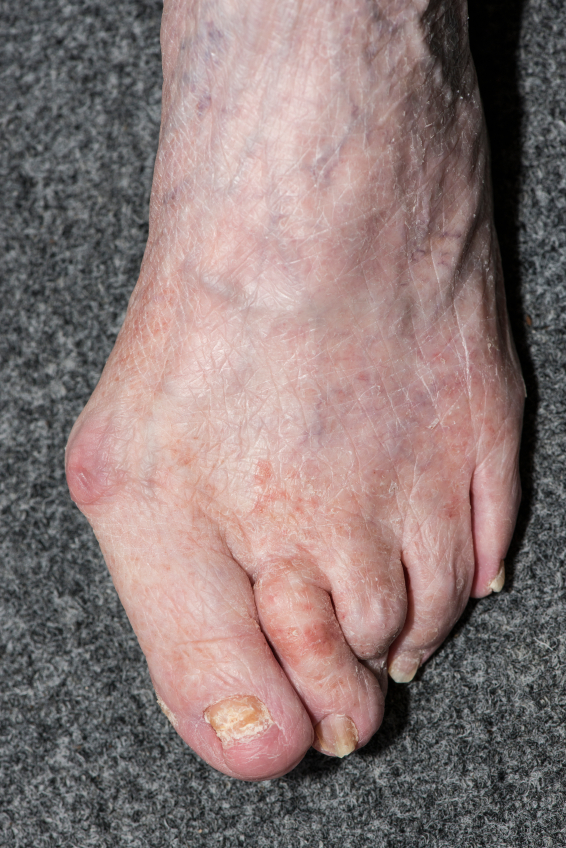 Basanta Kumar Singha Roy is planning to scale the Neelkanth peak of the Garhwal Himalayas sometime this August. This will be his first time mountain climbing again after a failed expedition to the top of Dhaulagiri last year, which ended in disaster when his oxygen canister sprung a leak. While his friend rushed to their camp to get help, Roy was left alone on the mountain in freezing conditions. After he finally got to the hospital doctors had to amputate several of his toes, including a hammertoe on his right foot.
Basanta Kumar Singha Roy is planning to scale the Neelkanth peak of the Garhwal Himalayas sometime this August. This will be his first time mountain climbing again after a failed expedition to the top of Dhaulagiri last year, which ended in disaster when his oxygen canister sprung a leak. While his friend rushed to their camp to get help, Roy was left alone on the mountain in freezing conditions. After he finally got to the hospital doctors had to amputate several of his toes, including a hammertoe on his right foot.
Fortunately Roy wasn’t too daunted by his loss. He has been making preparations for his trip to the Himlayas since the Dhaulagiri incident, and now he’s ready to stage his triumphant return to mountaineering. “Making a comeback was not that tough, because mountaineering has been a passion all my life and I owe it to my family because of their full support,” he said.
Hammertoes can be debilitating, but Roy’s case shows that it’s possible to make a full recovery from them. If you find yourself with this foot deformity, visit podiatrist Dr. Genine Befumo of University Foot & Ankle Center. Dr. Befumo can determine whether your condition is in fact a hammertoe and do everything in her power to treat you.
Hammertoe
Hammertoe is little-known a painful condition that affects the second, third and fourth toes involving different joints of the toe and foot. Hammertoe can be caused by many other conditions such as RA (rheumatoid arthritis), osteoarthritis, trauma or injuries to your foot, it can be hereditary and it can also be caused by a cerebral vascular accident. If you wear shoes that are too narrow or short for your feet, it may exacerbate any pain you already have.
It is really important to your overall well-being to seek out medical attention at the first signs of foot pain or anything that may hinder your ability to walk in a normal manner. Taking care of your feet is one of the first steps to being able to live a full and healthy life.
If you have any questions, please contact one of our offices in East Brunswick and Monroe, NJ. We offer the newest diagnostic and treatment technologies for all your foot care needs.
Read more about Hammertoes
Hammertoe: No Walk in the Park!
Hammertoe is a painful deformity of the second, third, or fourth toe, frequently caused by improper mechanics—the way a person walks or the shoes they wear that do not allow room for the deformity. Similar to mallet toe and claw toe, hammertoe involves different joints of the toe and foot. Shoes that are too narrow or short for the foot, or have excessively high heels, can cause of hammertoe. Improperly sized shoes force the toes into a bent position for long periods, causing the muscles to shorten and bend the toes into the hammertoe deformity.
Other causes of hammertoe may be complications from RA (rheumatoid arthritis), osteoarthritis, trauma to the foot, heredity, or CVA (cerebral vascular accident). Symptoms of hammertoe include, but may not be limited to, pain and difficult mobility of the toes, deformity, and calluses or corns from toes abrading one another.
A patient experiencing symptoms of hammertoe should seek examination by a physician, specifically a podiatrist. Podiatrists diagnose and treat disorders of the foot. If the doctor finds the involved toes have retained some flexibility, treatment may involve simple exercise, physical therapy, and a better fit to shoes worn by the patient. Treatment often targets controlling the mechanics, such as walking, that cause hammertoe by using custom orthotics.
In more advanced cases, where the toes have become rigid and inflexible, the doctor may suggest surgery. The operation would consist of incising the toe to relieve pressure on the tendons. The doctor may re-align tendons and remove small pieces of bone in order to straighten the toe. The insertion of pins may be necessary to fix bones in the proper position while the toe heals. Usually the patient is able to return home on the day of surgery.
If surgery is necessary, it is important to follow the postoperative directions of your physician. Theses may include various stretches, attempting to crumple a towel placed flat against your feet, or picking up marbles with your toes. Striving to wear shoes with low heels and ample toe space will ensure healthy feet and toes. Avoid closed shoes and high heels. Laced shoes tend to be roomier and more comfortable. Shoes with a minimum of one half inch space between the tip of your longest toe and the inside of the shoe will provide adequate space, relieve pressure on your toes, and prevent hammertoe from re-occurring.
Some tips on feet may include purchasing shoes at mid-day as your feet are smaller in the morning and swell as the day progresses. Ensure that she shoes you buy are both the same size and have the store stretch shoes at painful points to provide for optimum comfort.
Mixed Martial Artist Sustains Fractured Toe in Fight
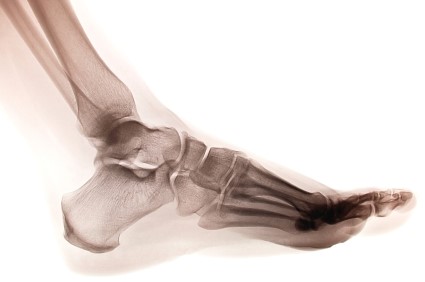 Uriah Hall defeated Thiago Santos at UFC 175 this week but didn’t leave the cage unscathed. Hall sustained a badly broken toe, presumably during the fight. The commentators remain unsure when or how exactly the injury occurred, but it became noticeable that Hall was limping midway through the first round after countering a powerful kick from his opponent.
Uriah Hall defeated Thiago Santos at UFC 175 this week but didn’t leave the cage unscathed. Hall sustained a badly broken toe, presumably during the fight. The commentators remain unsure when or how exactly the injury occurred, but it became noticeable that Hall was limping midway through the first round after countering a powerful kick from his opponent.
Hall clearly appeared to be having difficulty moving around after that, but he somehow managed to ignore the pain and beat Santos into submission. After the fight he posted a photograph of an X-ray of his foot online that showed that the second toe in his right foot was horribly dislocated.
Broken toes hurt. If you think your toe is broken, contact podiatrist Dr. Genine Befumo of University Foot & Ankle Center. Dr. Befumo can evaluate the severity of your injury and help you decide how you want to proceed with your treatment.
What to Know About a Broken Toe
Although most people try to avoid foot trauma such as banging, stubbing, or dropping heavy objects on their feet, the unfortunate fact is that it is a common occurrence. Given the fact that toes are positioned in front of the feet, they typically sustain the brunt of such trauma. When trauma occurs to a toe, the result can be a painful break (fracture). Another type of trauma that can break a toe is repeated activity that places stress on the toe for prolonged periods of time.
Symptoms of a Broken Toe
- throbbing pain
- swelling
- bruising on the skin and toenail
- the inability to move the toe with ease.
- toe appears crooked or disfigured
- tingling or numbness in the toe
- injured person experiences fever or chills throughout their body, and when there is an open, bleeding wound present on the toe.
Generally, a minor toe break will heal without long-term complications, but it is important to discontinue activities that put pressure on the toe.
For more information about Broken Toes, follow the link below.
If you have any questions, please contact one of our offices in East Brunswick and Monroe, NJ. We offer the newest diagnostic and treatment technologies for all your foot care needs.
Read more about Broken Toes
Predators Forward Suffers Ruptured Achilles
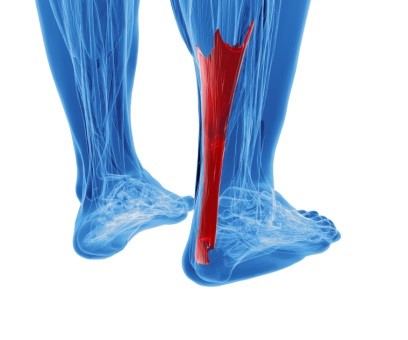 Nashville Predator Mike Fisher has ruptured his Achilles tendon and will have to spend the next four to six months recovering. This means he’ll have to miss at least the first part of the 2014-2015 hockey season.
Nashville Predator Mike Fisher has ruptured his Achilles tendon and will have to spend the next four to six months recovering. This means he’ll have to miss at least the first part of the 2014-2015 hockey season.
Fisher’s absence will probably be a painful blow to Nashville’s already inferior offensive roster. The team managed to acquire some fresh blood in the form of James Neal and Olli Jokinen during the offseason, but it may not matter much without the presence of their star forward. The lineup will also have a new leader in coach Peter Laviolette, who was brought on this year to replace the fired Barry Trotz.
Achilles tendon injuries can be nasty business. If you think you have hurt your Achilles in some way, visit podiatrist Dr. Genine Befumo of University Foot & Ankle Center. Dr. Befumo will examine the afflicted area and prescribe an effective form of treatment.
What is the Achilles Tendon?
The Achilles tendon is a tendon that connects the lower leg muscles and calf to the heel of the foot. It is the strongest tendon in the human body, and is essential for making movement possible. Because this tendon is such an integral part of the body, any injuries to it can cause severe difficulties and should immediately be presented to a doctor.
What are the symptoms of an Achilles Tendon Injury?
There are various types of injuries that can affect the Achilles tendon. The two most common are Achilles tendinitis and ruptures of the tendon.
Achilles Tendinitis Symptoms
- Inflammation
- Dull to Severe Pain
- Increased blood flow to the tendon
- Thickening of the tendon
Rupture Symptoms
- Extreme pain and swelling in the foot
- Total immobility
Treatment and Prevention
Achilles tendon injuries are diagnosed by a thorough physical evaluation. Often the doctor will order an MRI to confirm the diagnosis. Treatment will involve rest, physical therapy, and in some cases, surgery. However, various preventative measures can be taken to avoid these injuries, such as:
- Thorough stretching of the tendon before and after exercise
- Proper fitting shoes
- A healthy diet
If you have any questions, please contact one of our offices in East Brunswick and Monroe, NJ. We offer the newest diagnostic and treatment technologies for all your foot care needs.
Read more about Achilles Tendon Injuries
Blog Archives
- May 2024
- April 2024
- March 2024
- February 2024
- January 2024
- December 2023
- November 2023
- October 2023
- September 2023
- August 2023
- July 2023
- June 2023
- May 2023
- April 2023
- March 2023
- February 2023
- January 2023
- December 2022
- November 2022
- October 2022
- September 2022
- August 2022
- July 2022
- June 2022
- May 2022
- April 2022
- March 2022
- February 2022
- January 2022
- December 2021
- November 2021
- October 2021
- September 2021
- August 2021
- July 2021
- June 2021
- May 2021
- April 2021
- March 2021
- February 2021
- January 2021
- December 2020
- November 2020
- October 2020
- September 2020
- August 2020
- July 2020
- June 2020
- May 2020
- April 2020
- March 2020
- February 2020
- January 2020
- December 2019
- November 2019
- October 2019
- September 2019
- August 2019
- July 2019
- June 2019
- May 2019
- April 2019
- March 2019
- February 2019
- January 2019
- December 2018
- November 2018
- October 2018
- September 2018
- August 2018
- July 2018
- June 2018
- May 2018
- April 2018
- March 2018
- February 2018
- January 2018
- December 2017
- November 2017
- October 2017
- September 2017
- August 2017
- July 2017
- June 2017
- May 2017
- April 2017
- March 2017
- February 2017
- January 2017
- December 2016
- November 2016
- October 2016
- September 2016
- August 2016
- July 2016
- June 2016
- May 2016
- April 2016
- March 2016
- February 2016
- January 2016
- December 2015
- November 2015
- October 2015
- September 2015
- August 2015
- July 2015
- June 2015
- May 2015
- April 2015
- March 2015
- February 2015
- January 2015
- December 2014
- November 2014
- October 2014
- September 2014
- August 2014
- July 2014




